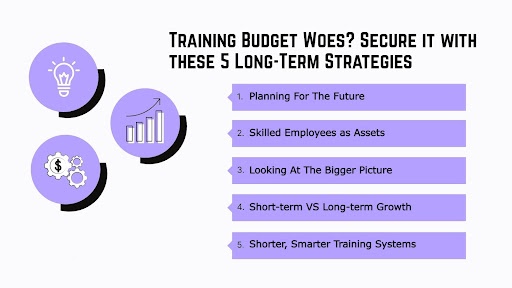Training helps employees learn new skills that can help them grow with the organisation. It helps increase team productivity and optimise resources and is key to the growth and success of any organisation. In fact, with more innovation and technological developments being adopted, training is one of the essential aspects that keep companies in sync with transformative business models. While top business leaders understand the value of training, balancing the training budget with the most immediate business expenses may be difficult.
Leading corporations encouraging training and skills development
The importance of skills development and the tech transformation of most industries has made most corporations focus on employee training programmes. One Indian corporation that has transformed its business model entirely with a sharp focus on employee skills development is Bajaj Finserv. Since Sanjiv Bajaj took over as the Chairman and Managing Director, his vision for the company brought a fresh infusion of technology and innovation into a very traditional business. The company has made great strides in bringing mobile and internet-based platforms that make financial products available to the untapped rural population of the country. An important aspect of this was focusing on skills upgradation of the employees and teams to make this digital transformation seamless.
Planning Your Training Budget
1.Planning for the future – Training essentially involves planning for your future business needs. It is a strong focus on the direction you see your business taking, which will help you plan your organisation's training and upskilling requirements. This makes budget planning for training, research, and development, a part of your business plan. When you count these, your budgeting exercise may require smart manoeuvring and resource allocation. You may also want to redirect a portion of the benefits or growth in revenue each year towards training programmes.
2.Skilled employees as assets – As the saying goes, "Employees are a company's greatest assets" and that's indeed true. Every great brand, each growth-oriented enterprise, is, in fact, built on the strength of a skilled workforce. Recognising this will help make the training budget an indispensable part of reinvesting in the company's future. Visionary leader recognise skills development as a key part of the company's success story. Training is part of this journey and is also an important tool for employee retention. Rajesh Gopinath, the CEO of Tata Consultancy Services, emphasises on training as an important hiring and retention tool. The core TCS philosophy reflects this focus on company growth through meeting employee expectations and skills development. Talented employees look for personal and professional growth in their organisations, and training is a great tool to incentivise long-term association.
3.Looking at the bigger picture – An innovative approach may be needed to balance the training budget and other working expenses. When you prioritise employee education and training, many innovative approaches can be taken to rein in the budget. Training expenses could be built into the employee cost-to-company or could be added as part of the yearly incentive package. Similarly, there can be a great mix of training resources and tools that can keep the costs to a minimum while optimising skills development. Classroom training sessions can be complemented with self-training resources or tie-ups with online education portals that offer your employees subsidised courses.
4.Short-term vs long-term growth – Training budgets are often the very first items to take a hit when there is a liquidity issue in the organisation. At times like this, the business leader should look at long-term growth and scalability and balance it with day-to-day budgetary needs. Hiring freezes, cutting down on training programmes, scaling down learning initiatives, and downsizing the research and development resources may free up a lot of funds that can be ploughed into meeting short-term goals. Still, in the long run, these will hurt the organisation and keep it from growing.
5.Shorter, Smarter Training Systems – While the value of training cannot be emphasised enough, the leader best understands the practical needs of the organisation. Smarter training resources that are in-built into the company's systems can help cut down on the budget without affecting the outcome. Employees can be incentivised to pursue skills development programmes with promotions and additional organisational growth or responsibilities. Shorter training programmes or tie-ups with online platforms can also help keep the budget in check while optimising skills development.
Summary:
In the age of digital technology, training may well be the one thing that puts an organisation on track to success. Training helps an organisation's employees learn new skills, hone existing ones, and bring new insights into operations. Finding the budget for regular training and development, however, may need smart manoeuvring on the part of the business leader. Recognising the need for continued employee training and balancing short-term needs with long-term goals can be the key to finding the budget to meet your organisation's training initiatives.


No comments yet